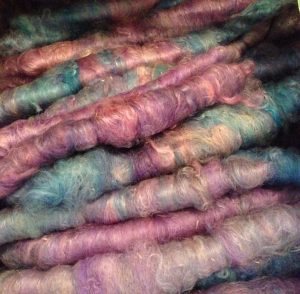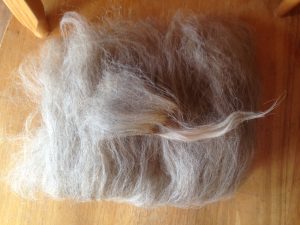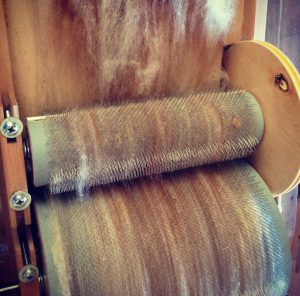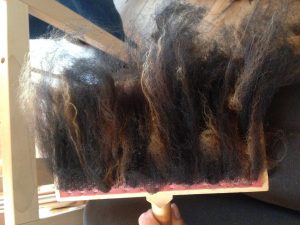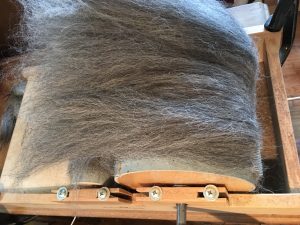Once you have chosen your fleece, we will barn skirt it as we shear, and I’ll explain my process for shearing and bagging, along with the various parts of the fleece and how they differ. Then, we will lay the whole fleece out and skirt again, leaving us with the prime areas, which will become our yarn.
Often, fleeces will benefit from being tumbled, to remove second cuts, some vm and dust.
If you are planning on dyeing your fleece, it is likely that we will split your experience into two days, as the fleece will need time to dry. In this case, the carding process will come after the dyeing.
Carding is where we brush the fibers into some kind of order in preparation for spinning; a either a batt made on the drum carder, or rolags made on the hand carders. Some fibers can be spun from the cloud with minimal preparation, and we can discuss how this affects spinning techniques and look at some sample yarns.
At this stage we can also blend your fleece with some other kind of natural fiber such as wool, mohair or silk, or with some sparkle, such as angelina or firestar. I’m a huge believer in letting a fiber speak for itself, and not processing the character out of it, which is why I avoid milled fibers wherever possible, but I also believe there’s few things in the world can’t be made even better with a little sparkle.
